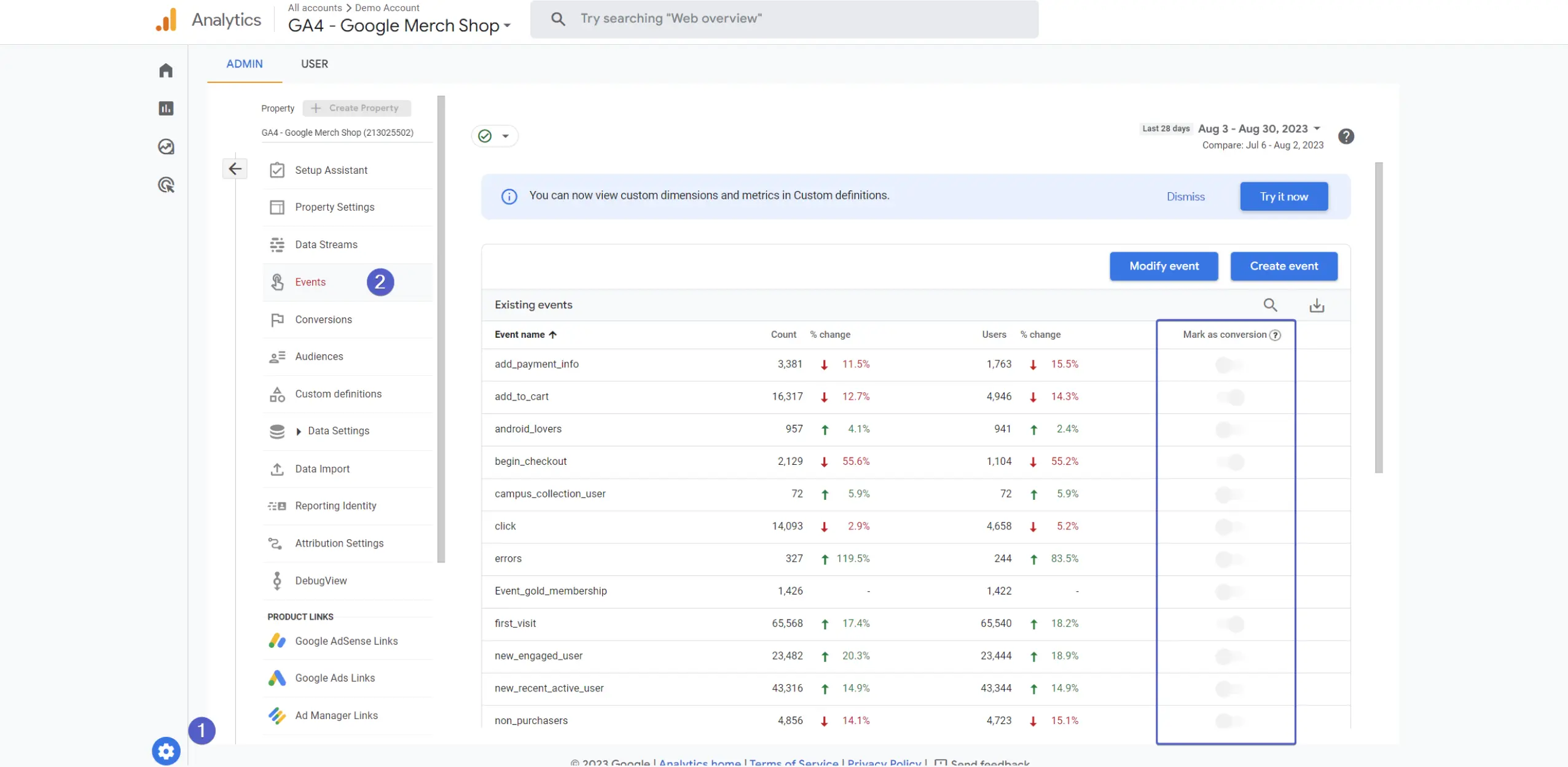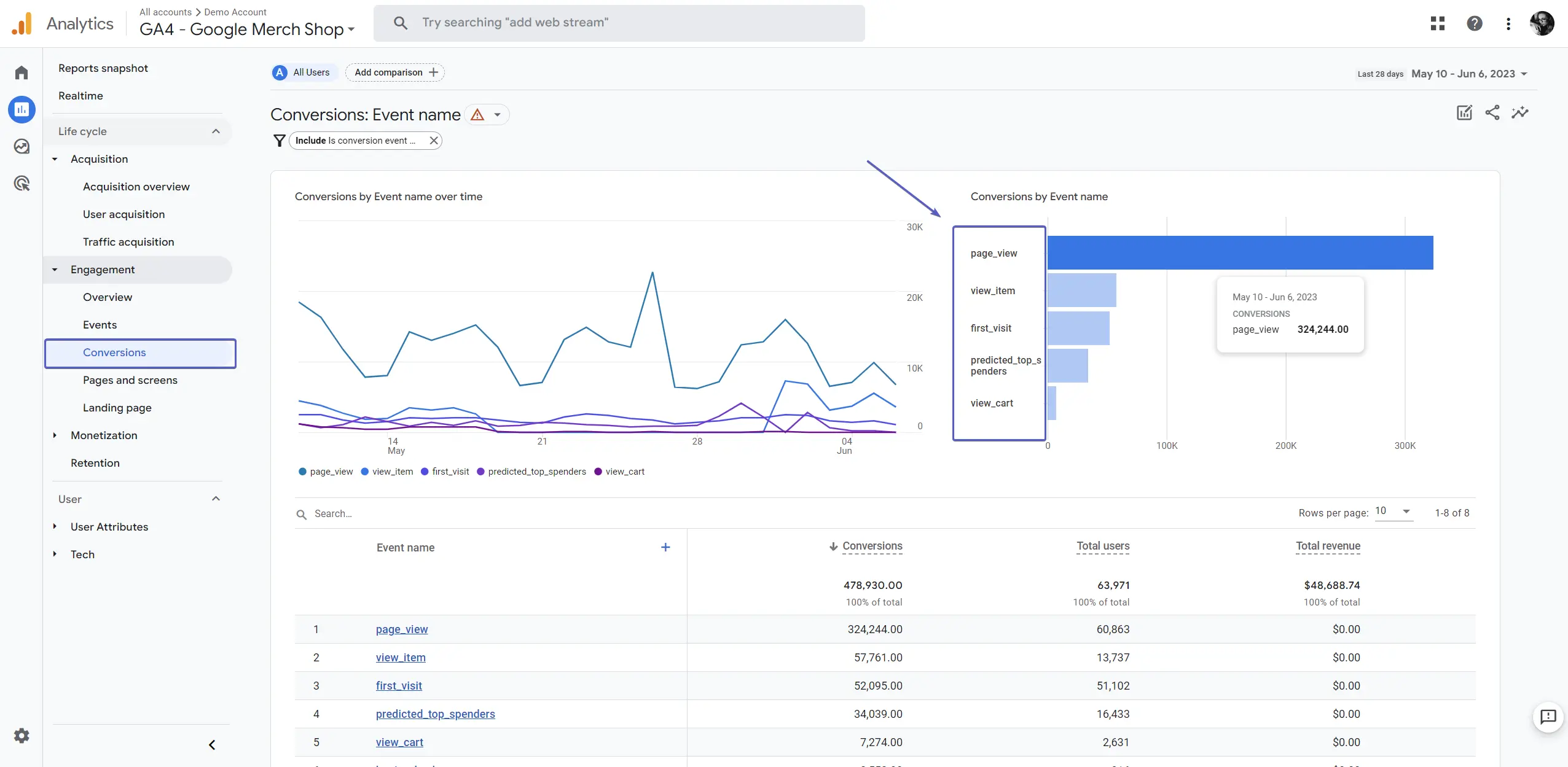Start Exploring Keyword Ideas
Use Serpstat to find the best keywords for your website
Monitoring Progress and Evaluating Results: 10 Important SEO KPIs
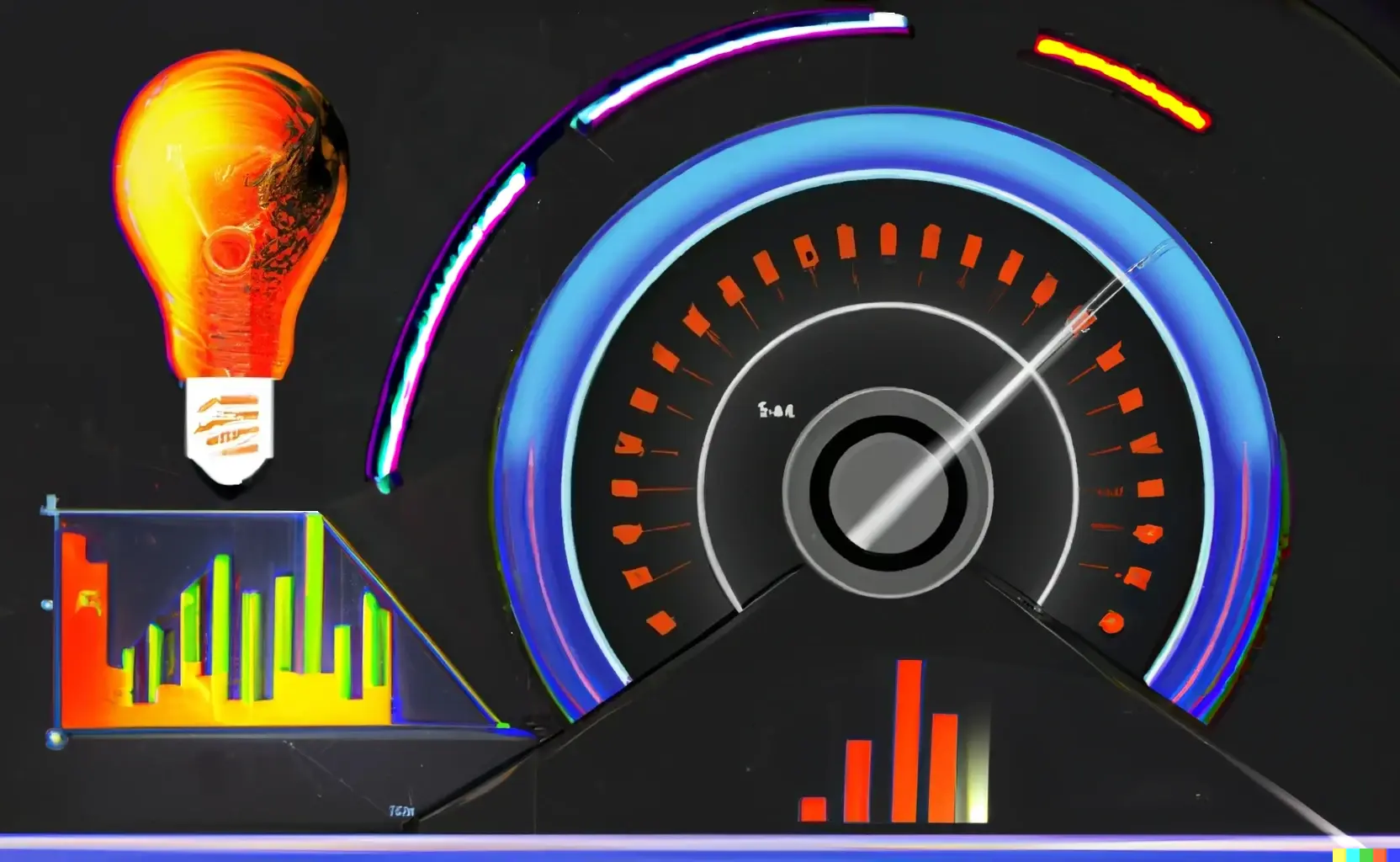

The modern approach to business analytics involves using top key performance indicators — KPI metrics. These are often quantitative indicators that reflect specific processes' effectiveness and impact.
Having a KPI for the site's effectiveness, you can set threshold values that will serve as a benchmark in implementing marketing strategy and management decisions. The rest, by and large, will be a matter of technique — you select an algorithm for promoting and adjust it if the current approach does not give the desired results.
This article will discuss SEO metrics — the key performance indicators in SEO, which will help you accurately assess the digital marketing performance in different aspects.
Core KPIs in SEO
It is worth noting that every business can have its own key performance indicators for websites. Some focus on sales, while others focus on keeping users informed. For one company, conversion means money coming into an account, while for another, it means a phone call. Therefore, approaches to KPIs tracking will also differ.
However, all primary search metrics have common features:
- Evaluating the effectiveness. SEO KPIs must be metrics that directly impact a company's financial results. They cannot be detached from reality — such an approach would make analytics useless.
- Employing data-driven decision-making. KPI's importance lies in the fact that they allow you to plan, based on the past results. SEO metrics should be used to develop plans at all levels — from specific advertising campaigns and immediate initiatives to global marketing strategies.
- Applying benchmarking practices. KPI monitoring helps in comparing the business with its closest competitors, segment leaders, and market averages. This helps in determining the company's position in the market and selecting appropriate development strategies.
These three simple principles will make it easier to choose SEO KPI reports. Focusing on them, you will be able to choose the most accurate, practical, and useful analytics indicators.
Top 10 SEO Metrics to Track in 2023
We tried to choose universal website KPIs that would be informative for any project. They will be suitable both for internal use and for reporting to clients. However, keep in mind that each business will have its own prioritized KPI metric. Therefore, the final reports should contain not only the basics we have listed but also industry-specific metrics adapted to the principles of a particular company.
1. Organic traffic volume
This key indicator of SEO performance shows how much money the site owner saves using SEO instead of advertising. It allows you to take a step back and evaluate the big picture without going into details. The estimated search traffic calculations (which most SEO services do) are based on SERP positions and the domain keyword search volumes.
This is one of the best KPIs for demonstrating the results of the work done to clients. To get the most out of it, you should examine this figure in the following aspects:
- In dynamics — KPIs tracking in different periods will show the effectiveness of certain decisions.
- In comparison — it is essential to understand the company's position to develop a policy of interaction with potential customers, partners, and competitors.
- In terms of key queries and specific site pages — this will help answer the question of how to measure SEO success and choose priority development areas.
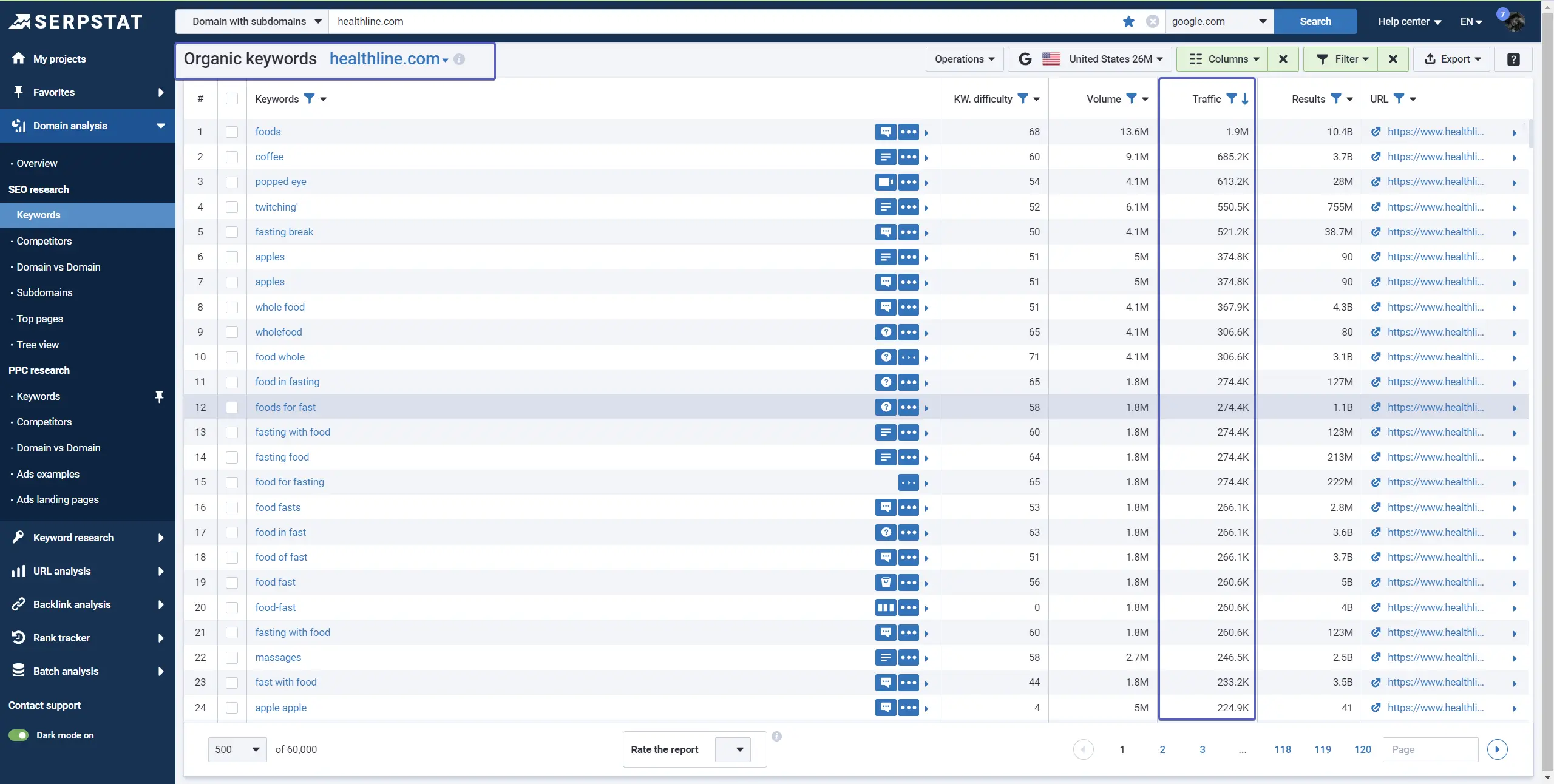
2. Click-Through Rate (CTR)
CTR is a KPI metric that shows the ratio of the number of clicks to the number of SEO impressions. It primarily evaluates the attractiveness of title and meta-description tags. But in reality, KPI importance goes beyond these two elements. The figure demonstrates the attractiveness of the company's offer and the idea behind the business.
As with the other most important website KPIs, CTR should be considered in the context of the current market position. To make the analysis as informative as possible, you need to take into account the industry, the nature of the business, and the site's position in search results. There are no uniform norms, so the goals are set based on the average indicators or the results of the closest competitors.
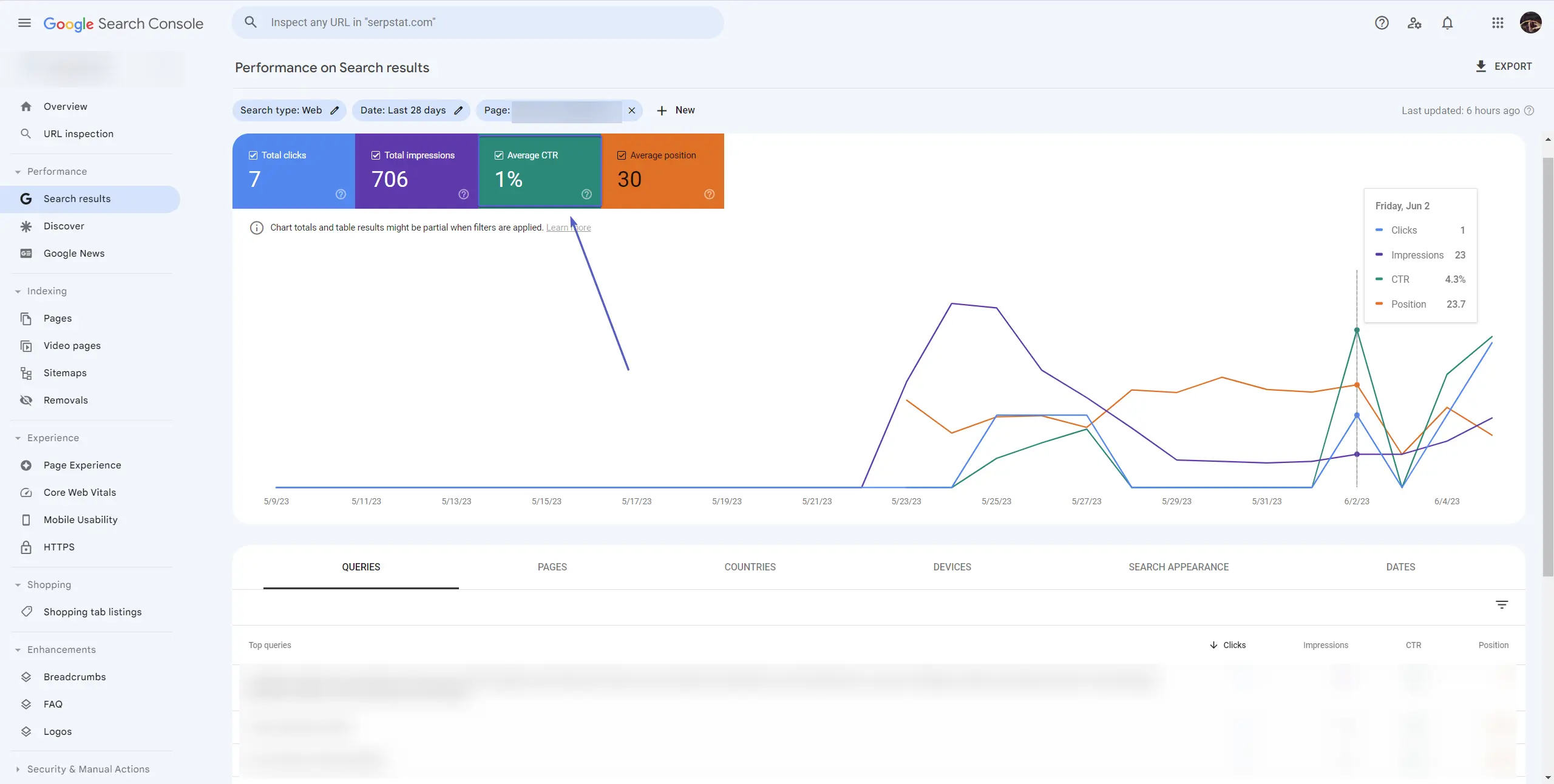
KPIs tracking will help you choose the optimal development strategy. If the clickability rate is high, you should focus on maintaining your current position and refuse to make bold experiments. Striving for the ideal often has the opposite effect, you should not fix what is already working well. If the website lags behind most competitors in terms of KPIs, you can try to drastically change the approach to promotion, for example, completely change the style of writing Title and Description.
3. Conversions in Organic Traffic
If you wonder which key performance indicators are important for your business, do not overlook the conversions. It reflects the site's performance, summarizing the efforts of marketers, salespeople, administrators, developers, and optimizers. This crucial KPI directly affects the company's revenue and profits.
We mentioned above that each company may have different notions of conversion. Therefore, it is essential to determine how to track KPIs in advance. In Google Analytics, you need to open the Admin tab, go to the Events sub-tab, and check the boxes next to all events considered target actions.
When we talk about monitoring SEO performance, absolute and relative conversion rates will matter to us. We mean the ratio of the number of targeted actions to the volume of organic traffic. Evaluating the dynamics of this percentage, you can get valuable information about the effectiveness of marketing policy.
4. Visibility in Search
An important indicator that most KPI trackers ignore is visibility. The gauge of SEO domain visibility quantifies the proportion of potential organic clicks a domain obtains. Serpstat's algorithm focuses on curating one million keywords across diverse domains. Here's the breakdown of the process:

Formula:

This allows you to evaluate the effectiveness of each optimization area separately. There is no uniform standard search engine visibility. It is crucial to consider the segment where the resource operates, possible algorithm changes in dynamic, and position on the SERP.

Tracking the visibility, you can see the potential share of organic traffic. And here, we should emphasize the word "potential." Visibility does not mean the user will click on the link and, even more so, take a targeted action. Therefore, in SEO, visibility is considered in conjunction with clickability and conversion rate.
If a site has good visibility but low click-through and conversion rates, it will be a reason for a detailed sales funnel analysis. The KPI importance in this case is that they allow you to see at what stage the system fails.
In top SEO tools like Serpstat, you can also create custom reports, adapt them to your business model, and observe all the drops and spikes on dashboards. Recently, we have also added GA4 integration to the report.
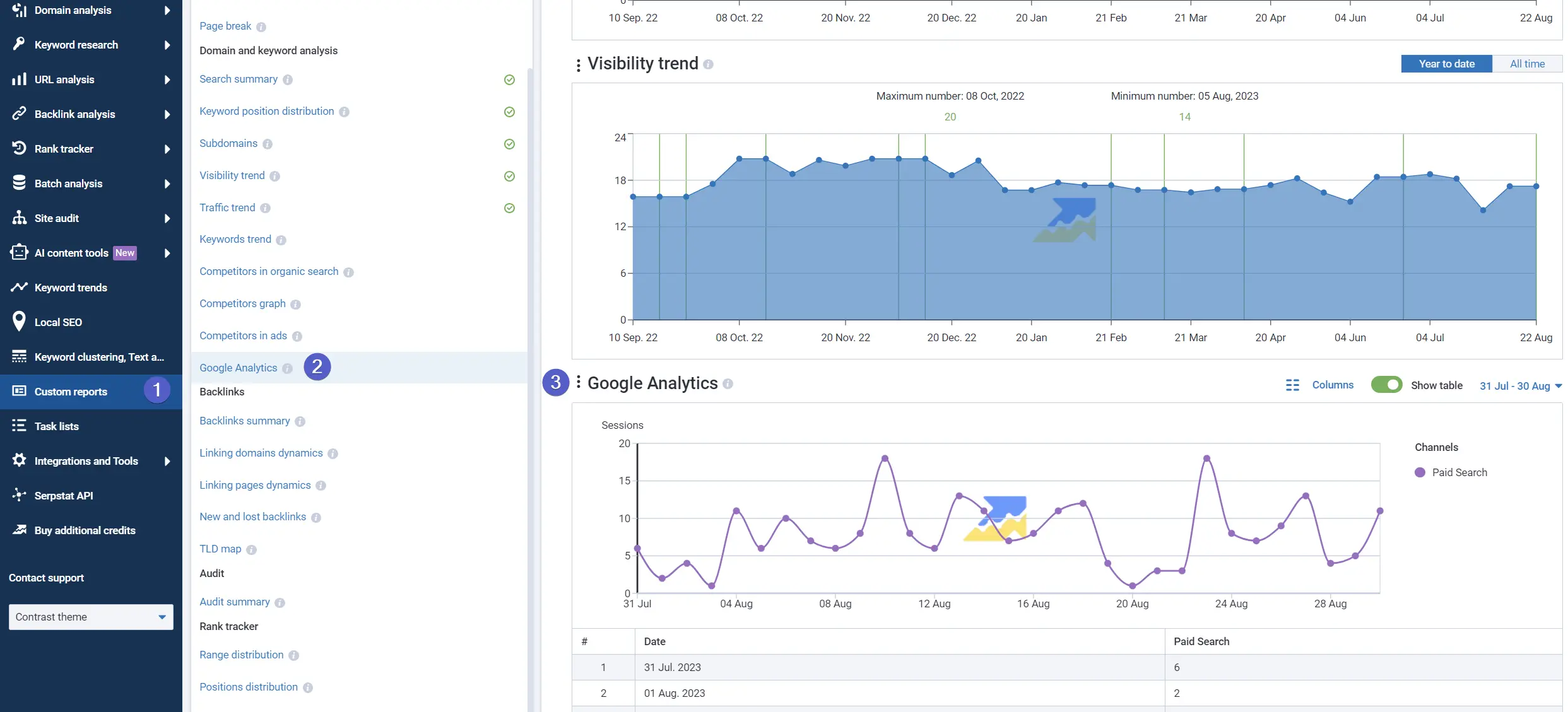
Unlock the power of insights with Serpstat custom reports and analytics!
Dive into data-driven decisions and uncover new opportunities for online success.
5. Number of Indexed Pages
It is one of the important KPIs to consider for SEO of large-scale websites. If the chosen promotion strategy implies the constant publication of new content, you must make sure that search engines index it. Unprocessed pages are a direct loss for the company. They require a lot of attention but, in most cases, do not affect the conversion KPI in any way. In addition, a large percentage of unindexed pages negatively impacts search engine metrics used to rank sites.
The easiest way to diagnose this is with Google Search Console. To check SEO KPI, you need to find the Index section in the main menu and click on the first item — Pages. Next, you should use the filter by selecting the All Submitted Pages value. This will help exclude pages that are not subject to indexing from the report.
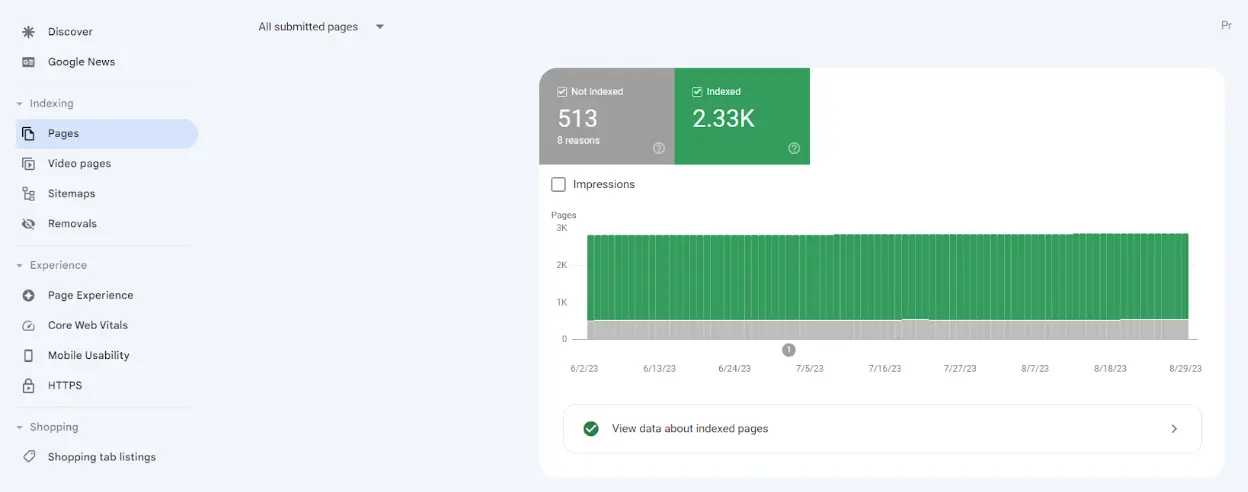
If a site is large enough and regularly publishes new content, it will always have unindexed pages. Search engines simply won't have time to process all the new articles. Therefore, to track SEO performance, it is better to use the indicator of the number of unindexed pages to the total number of pages in the Sitemap. The value of this KPI is also noticeable in dynamics — if the percentage is growing, you need to pay more attention to the technical aspects of optimization.
6. Traffic Value
The regular traffic volume reflects the number of visitors who visit the site from different sources. For the optimizer, it is an opportunity to demonstrate the results of their work with one simple indicator and for the site owner — to see the current size of the client base.
You can measure the traffic volume to your website using simple tools like Google Analytics. If you want to maximize the granularity of SEO KPIs and make your reports more informative, you should consider a specialized platform for digital marketing.
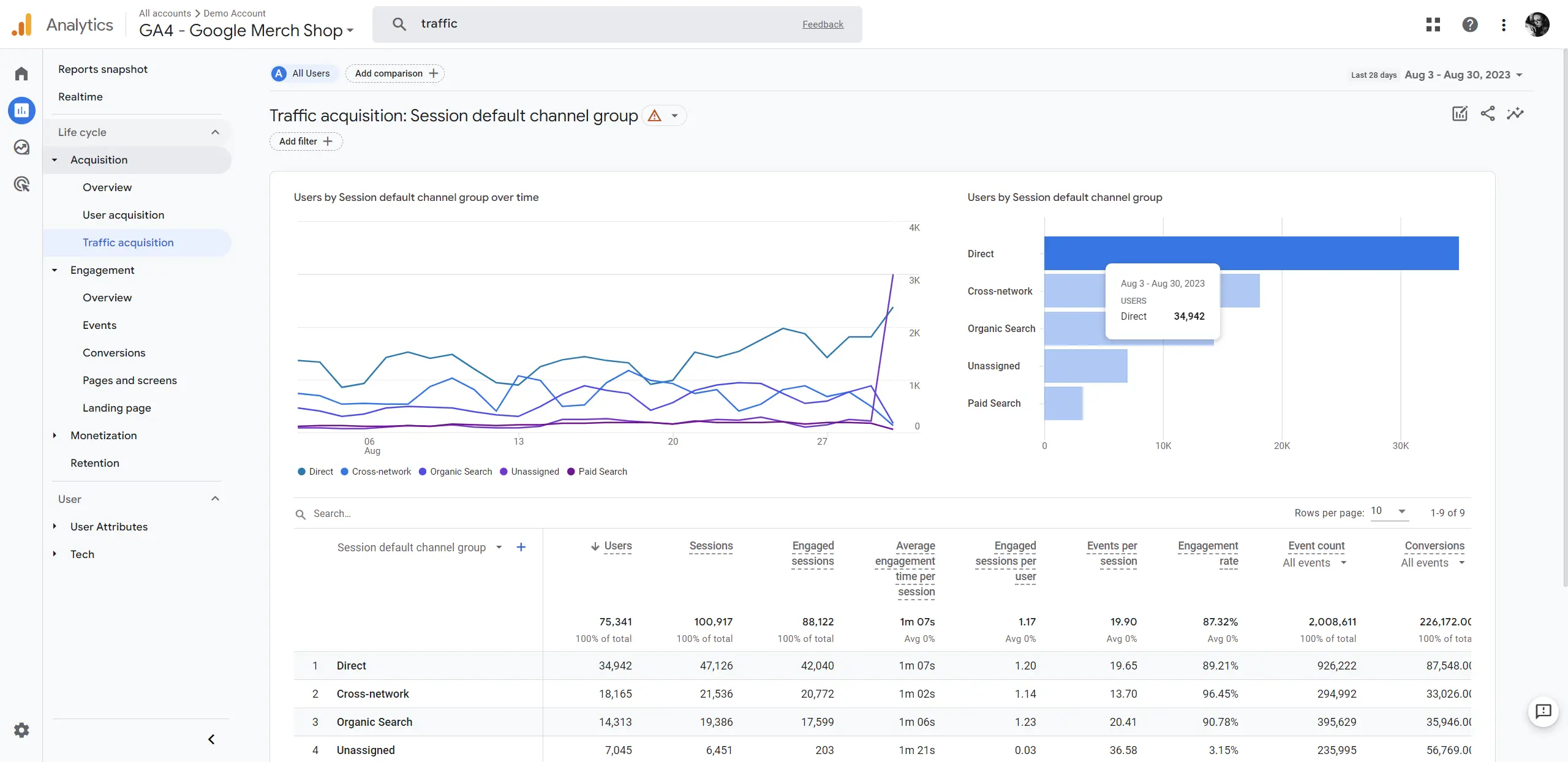
7. Website Rank
It is the position in the search engine for a particular query. You can track the ranking using Google Search Console. However, you should realize that the functionality of the free tool is limited. It only shows search KPIs for a single domain, making analytics a complicated and confusing process.
If you want to know how to track SEO rankings in the context of the market situation, you should use a rank tracker tool. Serpstat doesn't just display the top results by regions; it provides insights: history, cached SERP and SERP features of competitors. Looking through its reports, you can see the queries successfully used by competitors, covered by the site optimization strategy.

The "URLs" report possibility is to find the answer to how to track SEO rankings effectively. The results often show queries that are already used for a certain page, but the real page often differs from expected.
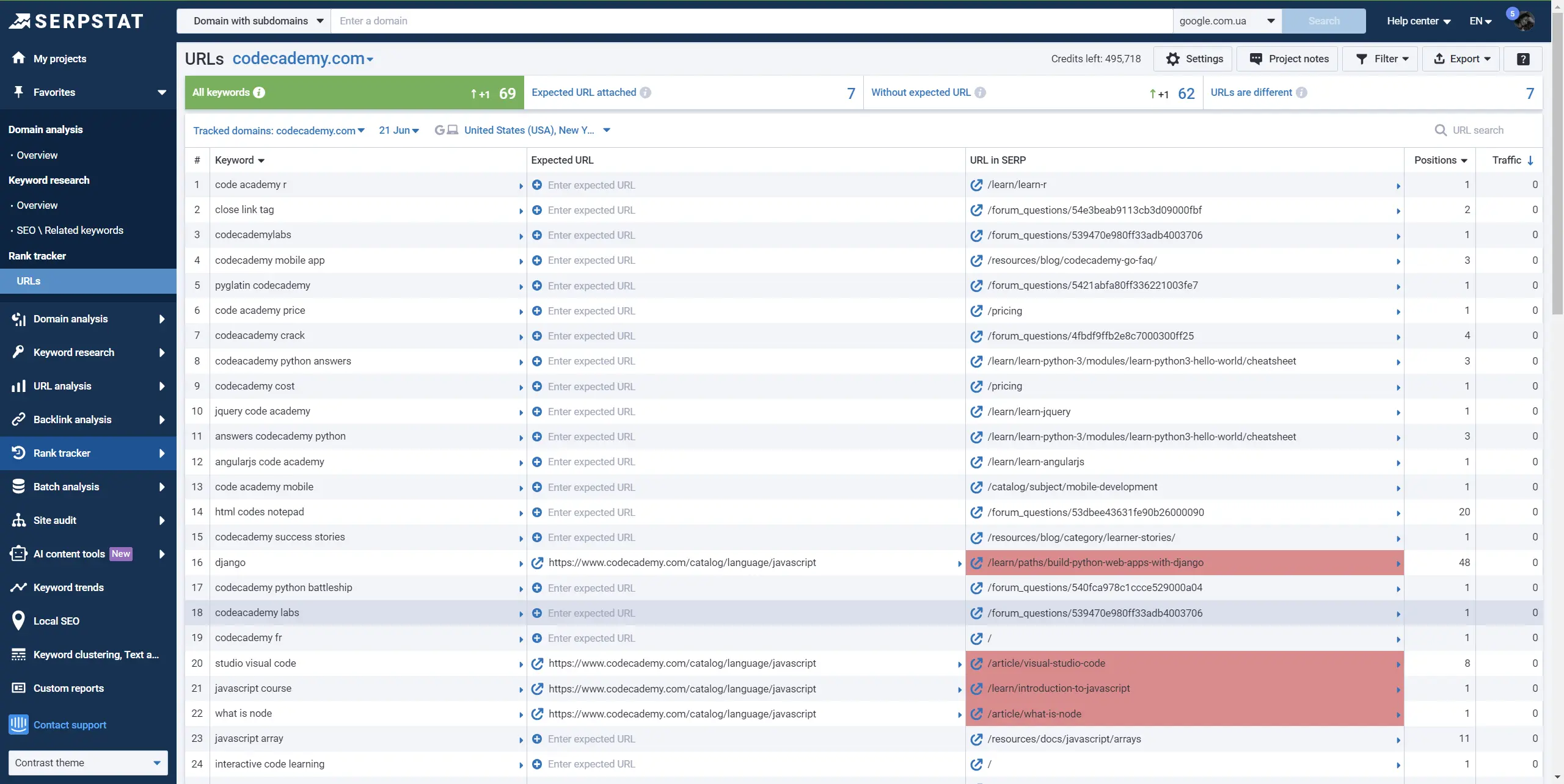
This allows you to optimize each page more thoroughly.
8. Quality of Backlink Donors
Specialists often argue what KPIs are most important for link building. Many optimizers measure the number of new links. However, this approach is already outdated. Search engines favor quality over quantity.
Therefore, among the most important metrics is the domain rating of backlink donors. It shows the authority of the site from the point of view of search algorithms. The higher this indicator, the greater the value of the link for the promotion of the site.
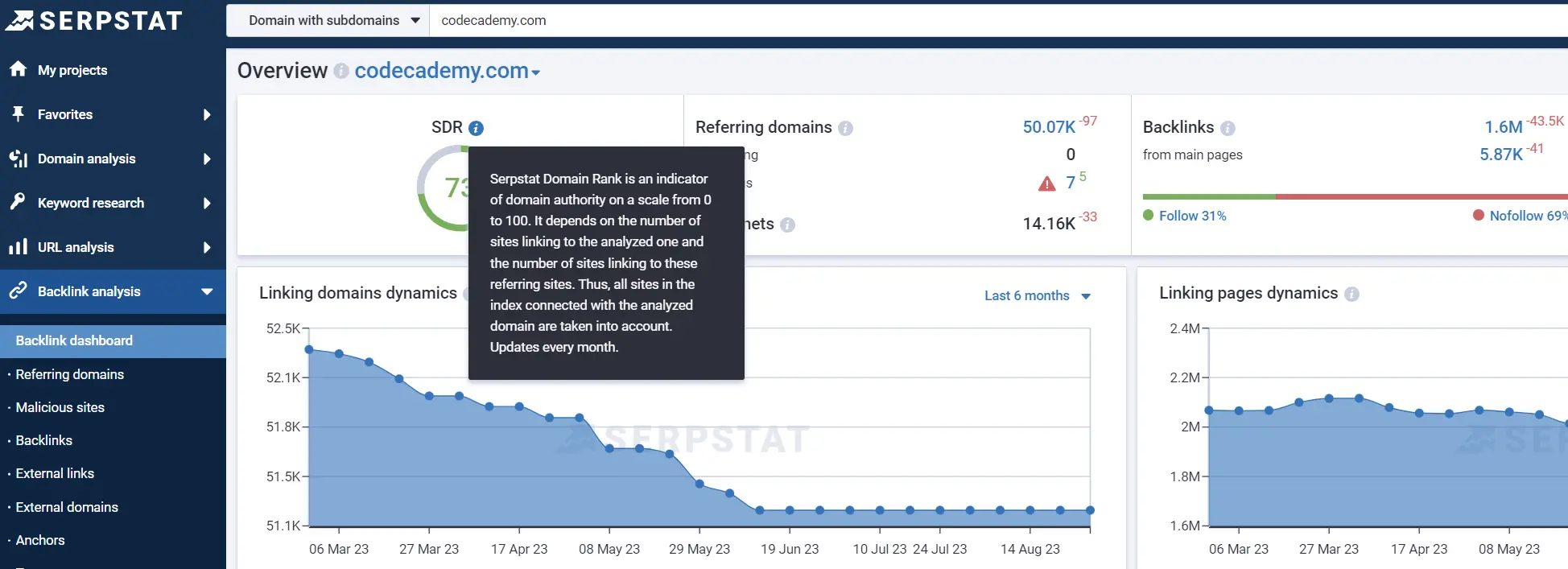
Serpstat analyzes the links of the site and sorts donors by authority level. In addition, the platform allows you to compare the effectiveness of link building with competitors and get valuable insights, including finding sites for publication not yet covered by the optimization strategy.
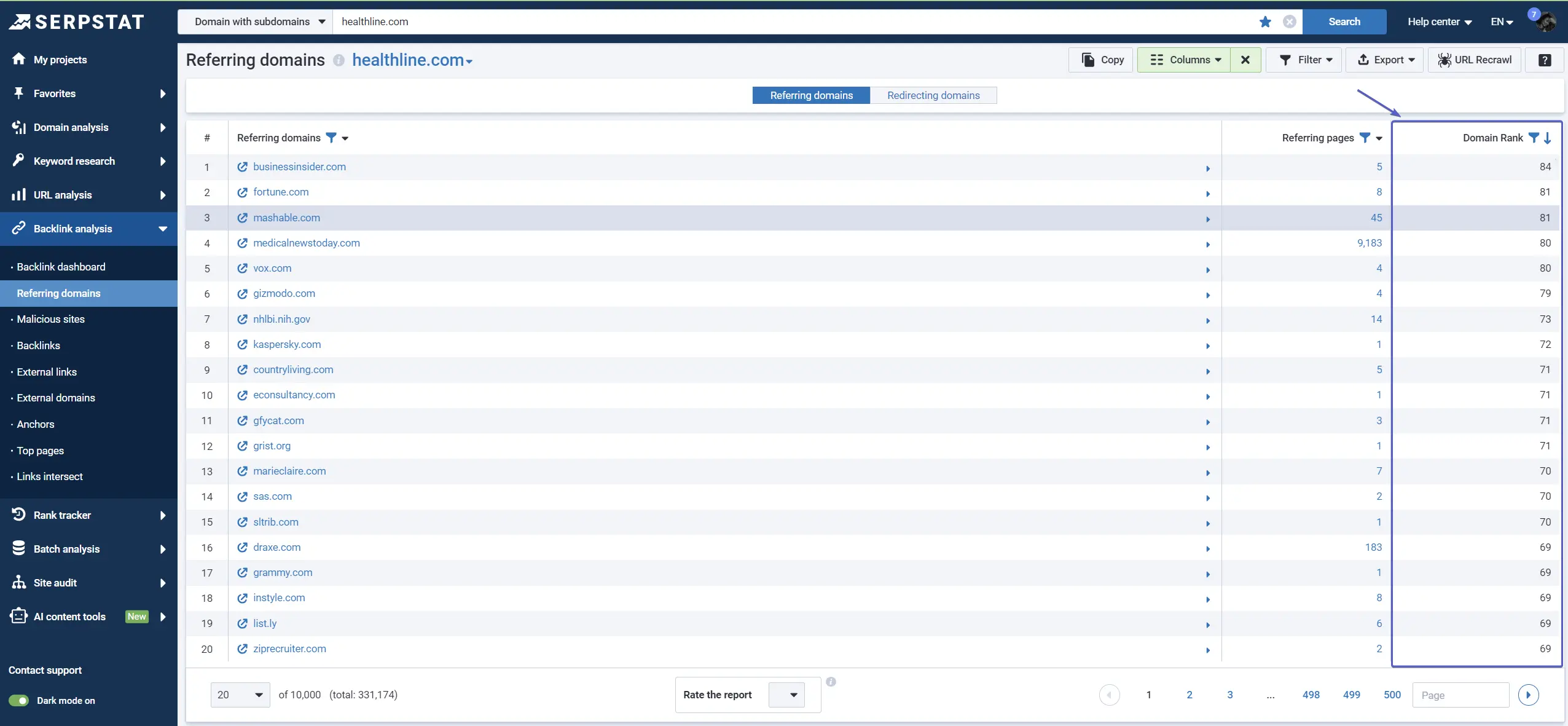
9. Key Technical Metrics
Some of the most important SEO KPIs in terms of user experience is related to technical metrics. They reflect the site's loading time, its adaptation for mobile devices, interactivity, and visual stability. The list of SEO KPIs to track comprises many metrics, including the time it takes to load the first and last page details, the time it takes to render the largest multimedia element, and so on.
Key technical metrics are present in free SEO traffic tracker tools. The most popular services in this category is Google Search Console and Google Page Insights. However, specialized marketing platforms do not just track these metrics — they provide tips on how to improve the condition of the site. Using them, you can gradually enhance web traffic and attract more visitors.
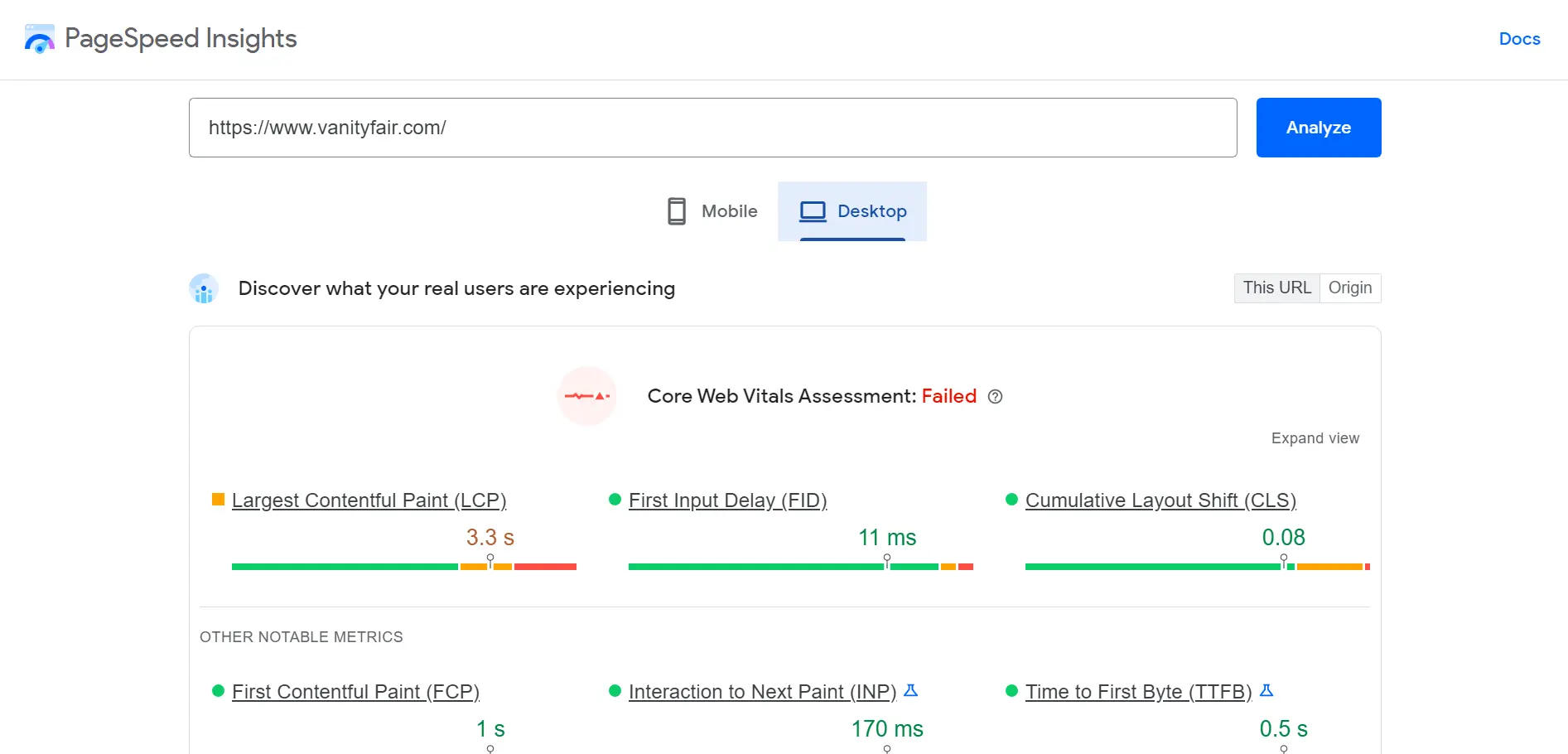
It is important to realize that good values of key technical metrics do not guarantee that a site will reach the top. If these metrics meet the standards, the page gets to search results. Therefore, in terms of the most important KPIs, such indicators as the volume of organic traffic, clickability, and conversions are prioritized.
10. The Overall Health of the Website
If you know what SEO effectiveness is, you realize that a flawless website is a prerequisite for getting to the top of search engines. Errors like broken links, missing images, and improperly filled meta tags raise suspicion. They serve as a kind of negative KPI for SEO. If their number becomes too high, search engines forcibly reduce the rank of the site and, in some cases, even stop its indexing.
The answer to how to evaluate SEO in terms of proper website performance will be specialized audit tools. They evaluate web resources by hundreds of parameters, calculating an integral health indicator. The latter is among the most important SEO KPIs to track. In Serpstat this indicator is called Serpstat Domain Optimization Score (SDO).
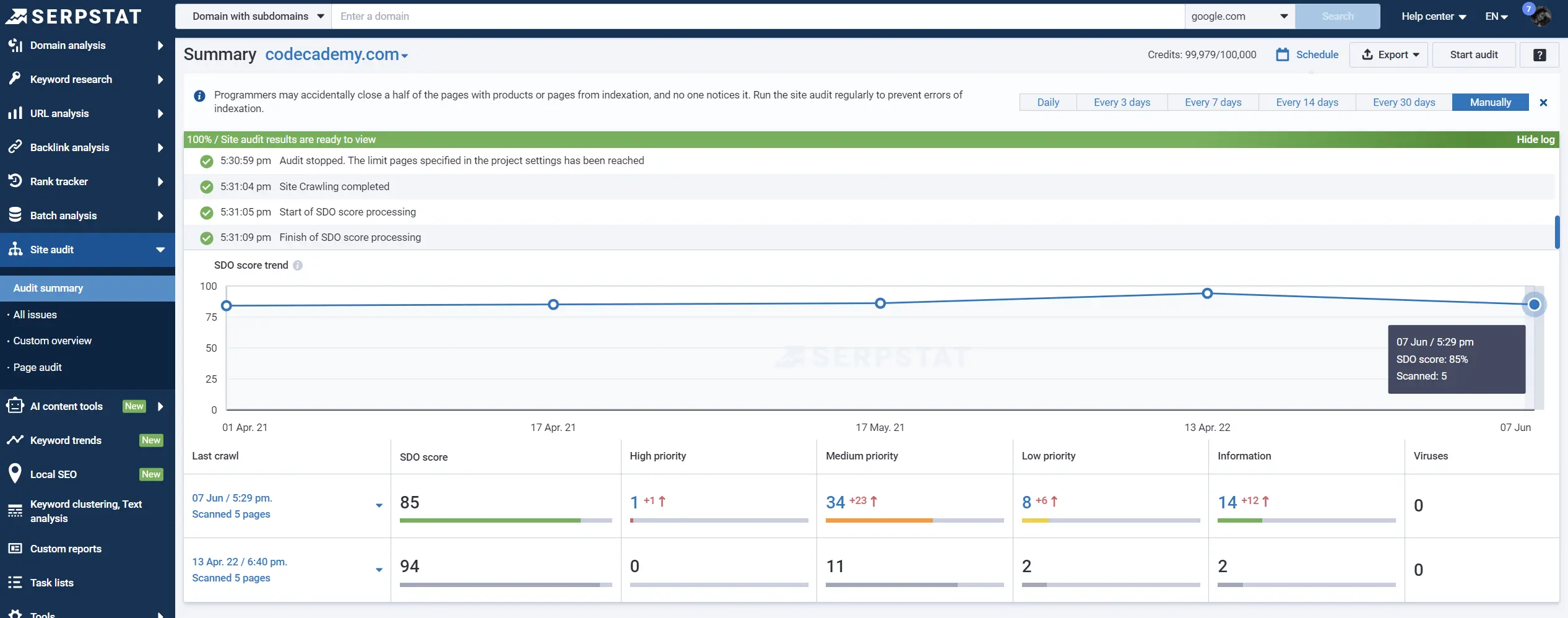
Many audit platforms do not just monitor issues. They group errors by importance, make work plans for the near future, and give advice on how to eliminate flaws.
Conclusion
To succeed, you must make SEO an ongoing process. It should consider the development of the overall market, the preferences of the target audience, and the level of competition. Therefore, you should track KPI in a dynamic rather than static manner.
The best answer to how to evaluate SEO will be the indicators of organic traffic volume, conversion, and click-through rate. To get detailed statistics, you should add to them the site's visibility in search, the quality of backlink referring websites, and ranks for specific keywords. Don't forget that technical criteria are important for tracking results — the overall website health, the number of indexed pages, etc.
It's important to calculate metrics and relate them to the real state of affairs. Therefore, the best SEO KPIs will provide enough information to make management decisions. Don't be afraid to experiment and go outside the box. Some figures fairly reveal their true potential, others — in comparison with competitors, and the rest — in dynamics.
But the key tip is to look for the key metrics that fit the nature of your business. Don't stop at the above metrics — expand the list using your experience, expertise, and market knowledge.
Discover More SEO Tools
Backlink Cheсker
Backlinks checking for any site. Increase the power of your backlink profile
API for SEO
Search big data and get results using SEO API
Competitor Website Analytics
Complete analysis of competitors' websites for SEO and PPC
Keyword Rank Checker
Google Keyword Rankings Checker - gain valuable insights into your website's search engine rankings
Recommended posts
Cases, life hacks, researches, and useful articles
Don’t you have time to follow the news? No worries! Our editor will choose articles that will definitely help you with your work. Join our cozy community :)
By clicking the button, you agree to our privacy policy.
